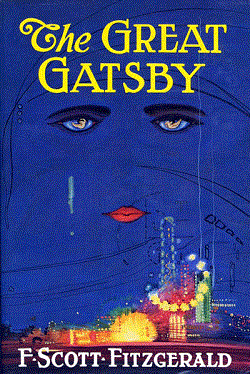| Title: | The Catcher in the Rye |
| Author: | |
| Publisher: | |
| Location: | Boston, United States |
| Published: | July 16, 1951 |
| Genre: |
| Pages: | 277 |
| Price: | 3.00 |
| Print Run: | 7,500 |
The Great Gatsby is a novel by , published by in 1925.
First Edition Identification Points
All of the following points must be present to ensure a true first edition / first printing.
- The copyright page has the following text in the middle of the page:
COPYRIGHT, 1925, BY
CHARLES SCRIBNER’S SONS
_______
Printed in the United States of America
- The copyright page has the Scribner’s seal at the bottom
- Back cover of the dust jacket has Jay Gatsby written with a lowercase “j” and an uppercase “J” stamped over it
- Front flap of dust jacket has $2.00 at the top
- There are numerous errors in the first printing that were corrected in subsequent editions:
- Page 16 line 60 has the word “chatter” (later replaced with “echolalia”)
- Page 119 line 22 has the word “northern” (later replaced with “southern”)
- Page 165 line 16 has the word “it’s” (later replaced with “its”)
- Page 165 line 29 has the word “away” (later replaced with “away.”)
- Page 205 lines 9 & 10 have the words “sick in tired” (later replaced with “sickantired”)
- Page 211 lines 7 & 8 have the words “Union Street station” (later replaced with “Union Station”)
- 8vo dark green cloth boards with blind stamped title and author on the front cover, gild lettered title, author, and publisher on the spine
Later Editions’ Identification Points
The applicable printing numbers are listed in brackets when known.
- All of the errata listed above have been corrected [2+]
- The year on the title page is 1942 or later [3+]
Publication History
F. Scott Fitzgerald (pen name of Francis Scott Key Fitzgerald) was an established author when he first began to plan the novel The Great Gatsby in June, 1923. He was busy at the time, however, with the production of his play The Vegetable. The play underperformed and left Fitzgerald with numerous debts; he was forced to write magazine stories all winter to be able to pay them. In April of 1924 the first chapter of the novel was written, but the work was further delayed when he and his wife Zelda moved to the Riviera and she became infatuated with a French pilot named Edouard Jozen. In the late summer and into fall, Fitzgerald resumed his work and was able to send a finished manuscript to his editor Maxwell F. Perkins on October 30th. He continued sending revisions to Scribner’s until the last possible moment, and refused an offer of $10,000 to serialize the work in order not to delay the book’s publication.
The author had found success in his previous two novels and considered Gatsby to be a big step forward and he was not alone; his editor thought it was a masterpiece as well. The Great Gatsby was published for $2.00 on April 10th, 1925 in a print run of 20,860. Fitzgerald was very anxious about the reception of the book and was heartbroken to find that it was not well-received by critics and sold rather poorly. In literary circles the novel was well-regarded (he received letters of praise from T. S. Eliot, Edith Wharton, and Willa Cather) but he was still downtrodden. A second printing of the book (which corrected all of the errata) came about in August of 1925 in a run of 3,000; these copies would sell poorly and some were still sitting in the Scribner’s warehouse when Fitzgerald died on December 21st, 1940.
In 1926 Chatto & Windus published a UK edition in London. The Modern Library began to sell an edition of Gatsby in 1934 with a new introduction by the author, but they dropped it in 1939 due to poor sales. After Fitzgerald’s death in 1940, Scribner’s published his unfinished novel The Last Tycoon bundled with short stories as well as The Great Gatsby. They printed another small run of the novel (just 260 copies) in 1942. Towards the end of World War II, a compact paperback Armed Services Edition was sent out to American soldiers in a run of 150,000. By this time, the negative reception of the book was well on its way to being dispelled and in 1945 the publishing houses New Directions, Viking, and Bantam all released their own new editions.

